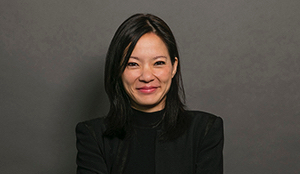Judicial Interpretations for Punitive Damages in China – wilful and serious IP infringers watch out!
On 3 March 2021, the Chinese Supreme Court issued the “Supreme Court’s Interpretations on the Application of Punitive Damages in the Trial of Civil Cases of Intellectual Property Infringement” (the “SPC Punitive Damages Judicial Interpretations”), which came into effect immediately.
I. Legislative framework
Punitive damages for intellectual property infringements were first introduced in Article 63 of the PRC Trademarks Law for malicious and serious trademark infringements and came into effect on 1 May 2014. In November 2019, the multiplier for trademark punitive damages were increased from three to five. Punitive damages provisions are also contained in the Anti-Unfair Competition Law (Article 17) for malicious and serious trade secret infringements, and Civil Code (Article 1185) for wilful and serious intellectual property infringements. However, punitive damages were noticeably absent from the PRC Patent Law and Copyright Law. This will soon change as the new Patent Law (Article 71) and the new Copyright Law (Article 54) will contain similar punitive damages provisions for wilful and serious infringements, which will come into effect on 1 June 2021.
II. SPC Punitive Damages Judicial Interpretations
The SPC Punitive Damages Judicial Interpretations provide guidance on how punitive damages will be applied and calculated for intellectual property infringements in China. The main provisions are set out as follows.
1. Definition
The definitions of “wilful” and “malicious” shall have the same meaning.
2. Complaint
The plaintiff must specify the amount of punitive damages claimed and provide support for the calculation when the Complaint is filed. The plaintiff will also have the opportunity to include a punitive damages claim provided such claim is included before the conclusion of the oral arguments at trial. If a punitive damages claim is added in an appeal i.e. 2nd instance proceeding, the court may request the parties to mediate, but if mediation fails, the party can file a new lawsuit to claim the punitive damages.
3. “Wilful” infringement
The courts will be required to consider all factors when determining whether there has been “wilful” infringement, including the type of IP right and its status, the popularity of the product, and the relationship between the defendant and the plaintiff/interested party. In particular, the court may preliminarily determine “wilful” infringement if:
- The defendant continued the infringement after being informed or warned by the plaintiff/interested party;
- The defendant or its legal representative/manager is the legal representative/manager or actual controller of the plaintiff/interested party;
- The defendant had access to the IP and was an employee, or had cooperation, licensing, distribution, agency, or representative arrangement with the plaintiff/interested party, or there were business transactions or business negotiations with the plaintiff/interested party; or
- There is piracy or trademark counterfeiting.
4. “Serious” infringement
The courts will be required to consider all factors when determining “serious infringement” including the means, frequency, duration, geographical scope, scale and effect of the infringement and the infringer’s behaviour in the court proceedings. In particular, the court may determine “serious” infringement if:
- The defendant has committed repeated or similar infringements after an administrative order or court judgment;
- The defendant is a serial infringer;
- There has been forgery, destruction, or concealment of the infringing evidence;
- There has been a refusal to comply with a behaviour preservation order;
- Substantial profits have been earned by the defendant and substantial losses incurred by the plaintiff; or
- The conduct may have impact on national security, public interest or personal health.
In a recent press conference, the Judge of the Supreme Court confirmed that an objective test will be applied to determine “serious” infringements.
5. Punitive damages base
Subject to the specific applicable laws, the base for punitive damages will be determined by the actual loss of the plaintiff, the illegal income (or benefits) of the defendant. The base may also be determined by reasonable license fees, if the actual loss or benefit cannot be proved. The base will not include the reasonable enforcement costs of the plaintiff.
The court may order the defendant to provide their financial records. If the defendant refuses to do so without proper reason or provides false information, the court may determine the base for punitive damages calculation based on the plaintiff’s evidence. The defendant may also be fined, detained, or prosecuted for criminal liabilities based on Article 111 of Civil Procedure Law or Criminal Law.
6. Multiplier for punitive damages
The courts will consider the degree of fault and the seriousness of the infringement to determine the multiplier. If there are separate administrative and criminal penalties executed against the defendant, the court will take this into account when determining the multiplier for punitive damages for the same infringement.
III. Supreme Court judgment
On 24 November 2020, the Supreme Court handed down its first punitive damages judgment in the “Kabo” technical (trade) secret infringement case [(2019) ZUI GAO FA ZHI MIN ZHONG No.562]. In this case, the Supreme Court determined the multiplier to be five and awarded RMB 30 million in punitive damages. This case was selected as one of the Cases of the Supreme Court in 2020, and the Supreme Court announced that it will publish more punitive damages cases in the near future.
China is strengthening its IP protection and punitive damages will be a significant deterrent to infringers in China.




